The development of the cartridge went in lock-step with the improvement of available powders in the latter part of the 19th century. We shall review here some of the brands that became popular with gunmakers and sportsmen, as they transitioned from black powder to 'smokeless' powders. Today, few shooting men could name their 'fevourite powder' but in 1900 it was a keen topic of discussion.
Smokeless Diamond. Smokeless Diamond was a 33-grain bulk powder described as ideal for loads for ‘modern short and medium range game shooting. A ‘fast’ powder which is comfortable to shoot.’
Smokeless Diamond was the first completely gelatinised bulk powder, made by pressing plastic nitro-cellulose through holes in a die, slicing it into black, saucer-shaped flakes at the die face.
Each flake is made porous and it creates a hard and homogeneous powder, resistant to climactic variations and easily ignited by the cap flame. A common 12-bore cartridge load for game shooting was 33 grains of Smokeless Diamond in a 2 1/2” case, with 1 1/16oz lead shot. This replaced the previous load of 3 drams of black powder, behind 1 1/8oz of shot.
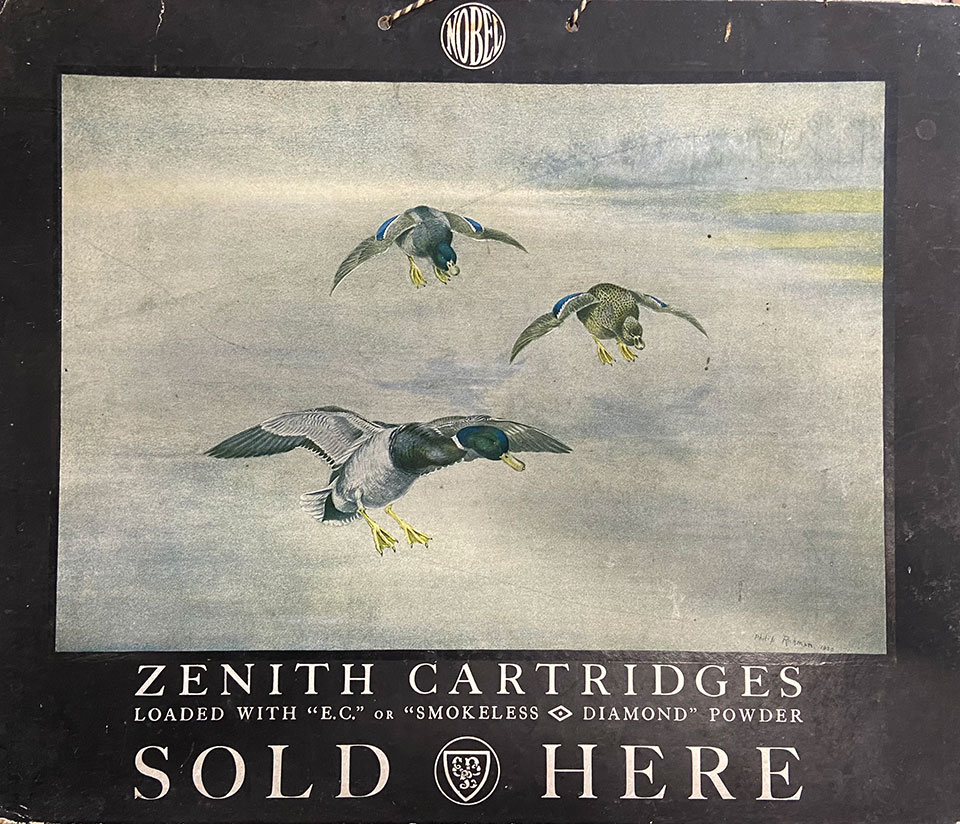
E.C. No.3 Powder. Like Smokeless Diamond, E.C. powder was a 33 grain bulk powder. Orange in colour, it was developed from the 42 grain E.C. No.2, which was a 42 grain powder. ‘E.C.’ stood for ‘Explosives Company’ (of Stowmarket), who introduced a smokeless powder in 1882.
No.3 was suited to shooting light game loads, where soft recoil was required, and became very popular in the first quarter of the 20th century as a shotgun propellant, though it was too coarse grained o be suited to rifle ammunition.
E.C, made from nitro-cotton and nitrates of potassium and barium in grain-gelatinised ether alcohol, was stable and had a long-life when stored and was loaded as an option into Eley’s range of cartridges.
A typical game cartridge loading with this powder for a 12-bore was 33 grains of powder in a 2 1/2” case pushing a shot load of 1 1/6oz. The ‘Pegamoid’ cartridge was loaded with E.C. powder as an option. It replaced the old black powder load of 3 drams behind 1 1/8oz of shot.

Empire Powder. ‘It throws a good pattern, is easy on the shoulder and is undoubtedly the powder for the game or clay pigeon shot with a heavy day’s shooting in front of him’. so stated Eley’s 1928 advertisement for the Nobel product.
‘Empire’ was a 33 grain bulk smokeless powder, like smokeless Diamond and E.C and was available loaded into many proprietary cartridges as an option, on a like-for-like basis with these.
Eley sold an ‘Empire’ cartridge, in a blue paper case, which they recommended for comfortable shooting particularly in tropical climates, where its stability contributed to its reliability in conditions hotter than typical in Europe. This was loaded with 1 1/6oz of shot in a 2 1/2” paper case with a high steel base.
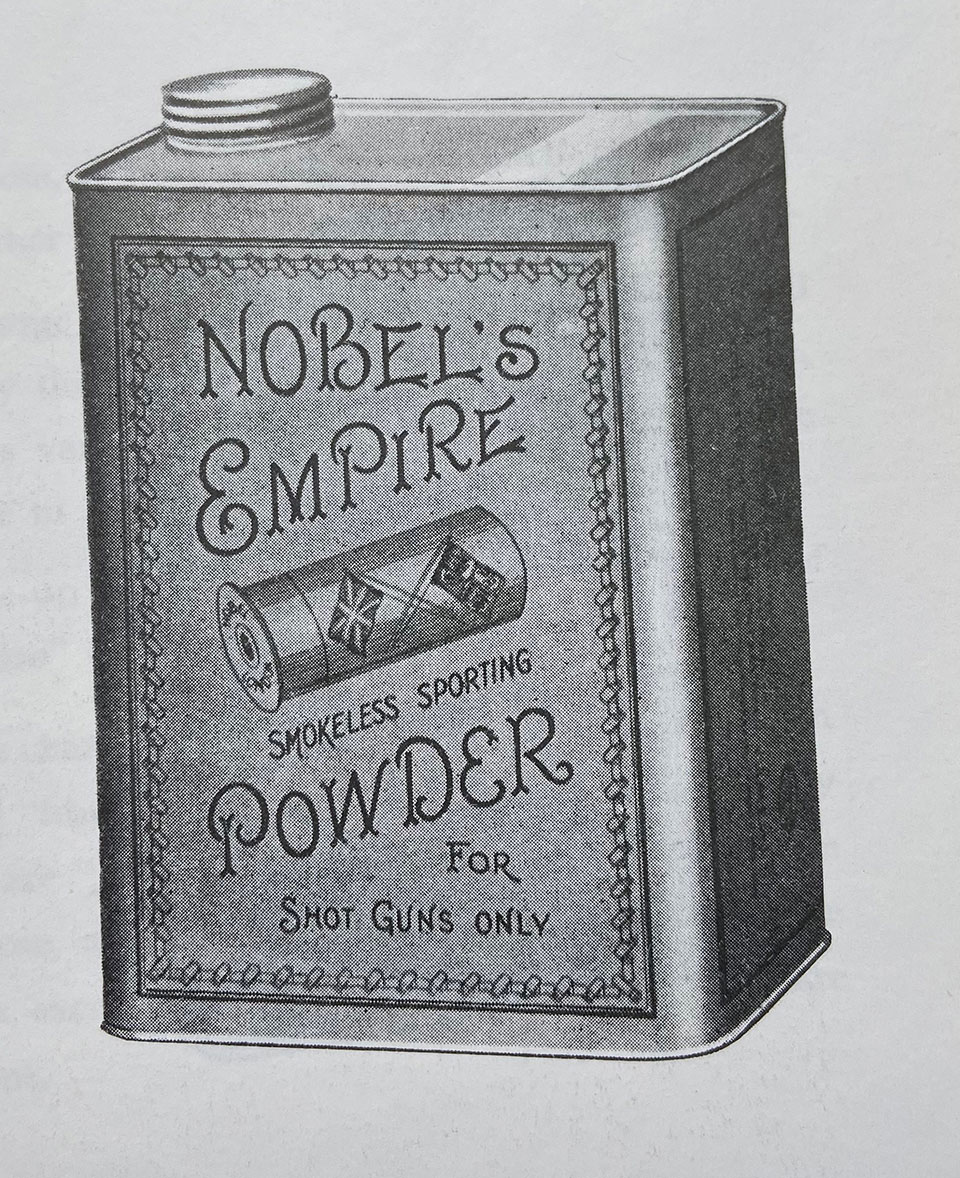
Schultze. Schultze was the original ‘smokeless’ powder, introduced in the mid 1860s by Nobel Industries. Schultze was a 42 grain bulk powder, white in colour and suited to firing heavy charges as well as standard loads, while maintaining moderate chamber pressures. It was made from nitrated pellets of wood impregnated with barium nitrate and potassium nitrate.
Eley loaded a ‘Pegamoid’ case, paper, lined with metal in order to be both water-tight and gas-tight. Into this they packed Schultze powder under 1 1/16 ox of shot. They also loaded Schultze into their ‘Special Wildfowling’ cartridge, loaded with 1 1/8oz of shot.
Among the stranger claims to fame the company made was the burning down of the Prussian factory where it was once made, in 1869. The notable exception was that the factory burned to the ground, whereas a black powder factory would have exploded!
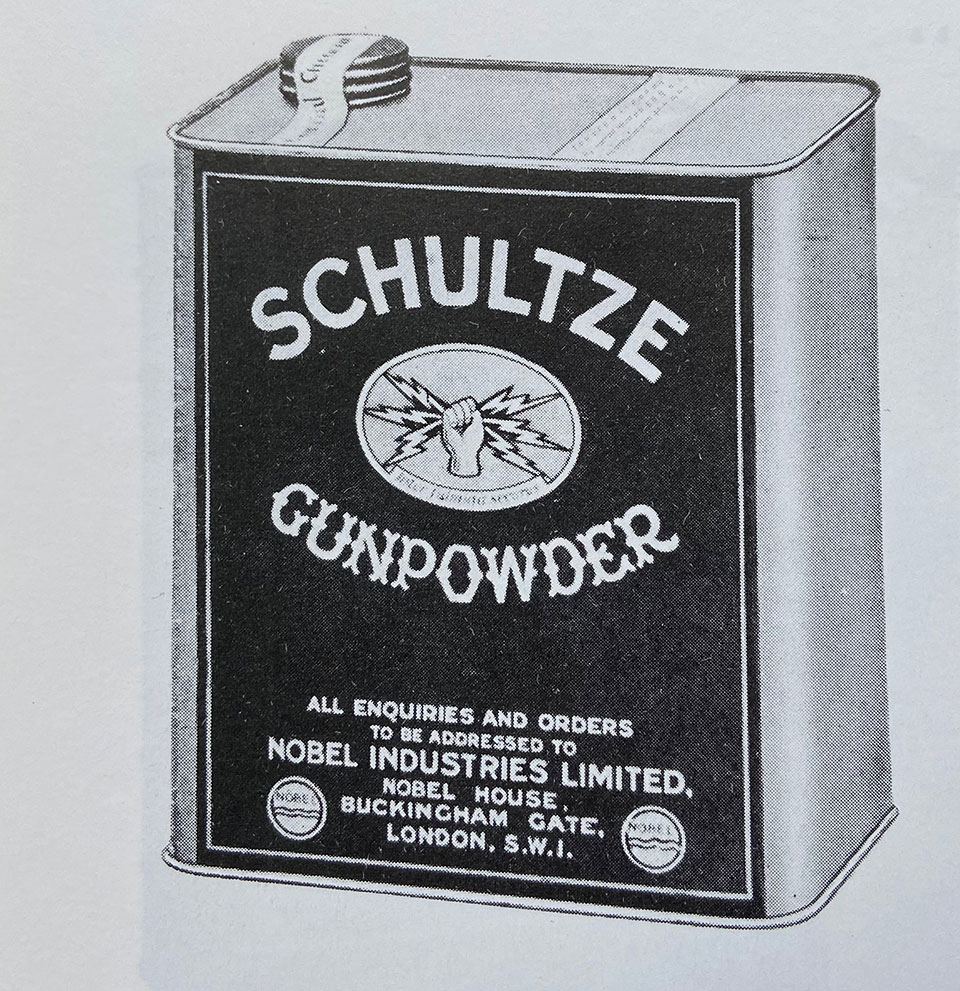
Sporting Ballistite. Unlike the other ‘smokeless’ powders we have featured to date, which are ‘bulk powders’, Sporting Ballistite, made by Nobel Industries, was a ‘dense’ powder. Bulk powders were made so as to deliver the same pressure as the equivalent volume of black powder. This was useful; as a loader could use the same measure for loading his cartridges whether using the standard 3 drams of black powder, or an equal volume of, for example, ‘E.C.’ powder.
Sporting Ballistite was a dense powder, not a bulk powder, meaning less of it was needed to produce the same pressure. Home-loaders had to be wary of dense powders because it was easy to over-load and cause cartridges to exert too much pressure, in extreme cases, causing damage to the gun.
Sporting Ballistite was a gelatinised powder and was loaded into cartridges with cone-shaped bases and special wads. It was resistant to moisture and well suited to use in extreme climactic conditions. A typical 12-bore load using this powder was 25 grains of Sporting Ballistite pushing 1 1/16oz of shot from a 2 1/2” case.
Nobel-branded yellow cartridges, labelled ‘Nobel’s Sporting Ballistite’ in a gas-tight paper case with metal lining and reinforced steel base were available in 12-bore and 16-bore.
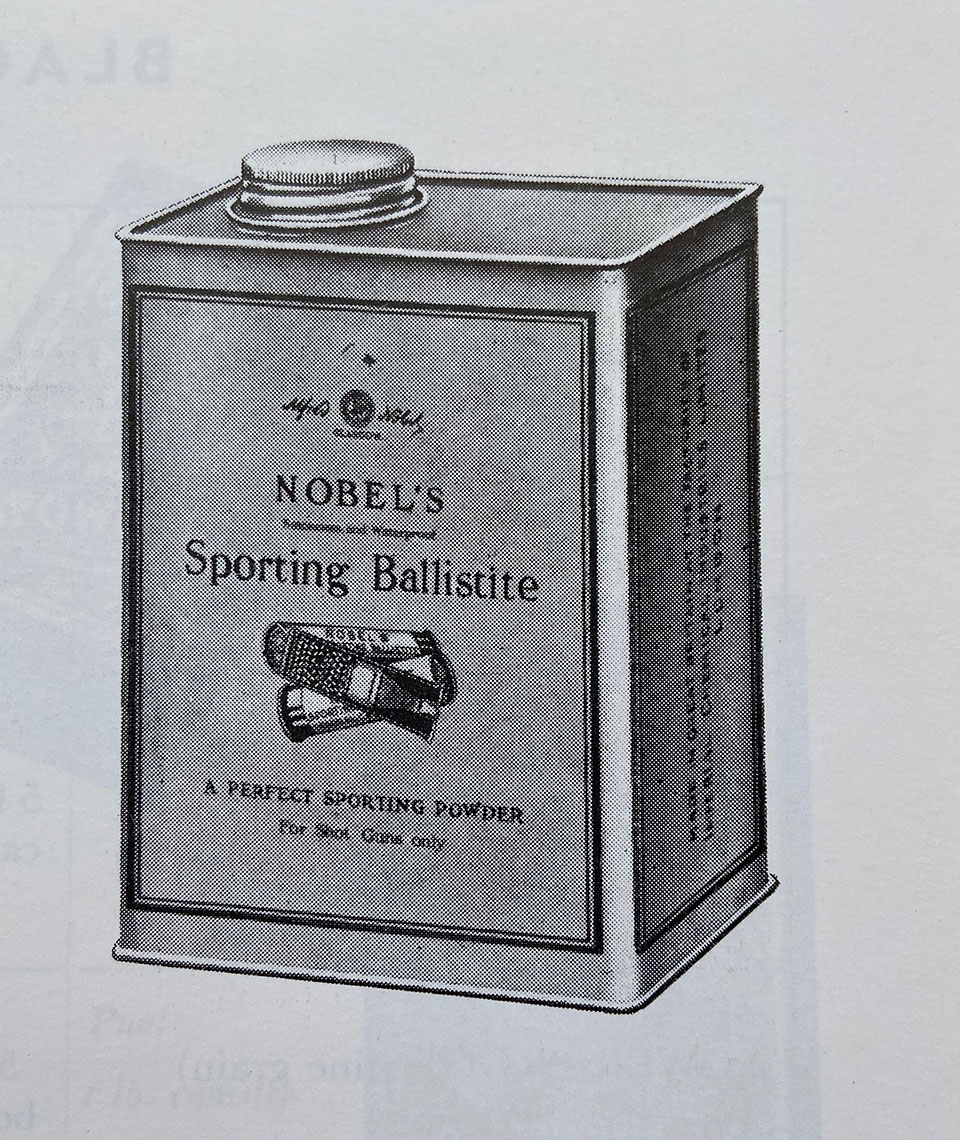
Modified Smokeless Diamond. Like Smokeless Diamond powder, ‘Modified Smokeless Diamond’ was made by pressing nitro cellulose through holes in a die and slicing it into flakes. However, while Smokeless Diamond was made into round flakes, the ‘Modified’ version was square in shape. It was a 36-grain bulk gelatinised powder, made by Curtis’s & Harvey in London.
The makers described it as suitable for ‘ loads for which Smokeless Diamond is not designed; heavy shot charges and small bore loads where the weight of shot is greater than that usually considered suitable for the transverse area of the case.’
A recommended 20-bore load consisted of 29 grains of powder in a paper 2 3/4” case, under 7/8oz of shot.

Amberite. Amberite was another product of Curtis’s & Harvey, who had factories in Tonbridge and London. It was a 42 grain bulk powder, very similar to Schultze but intended for heavier loads and bores larger than twelve.
In appearance it was a grey, granular, powder, whereas Schultze was white. When used in a 12-bore the recommended load was 3 drams (by measure) of powder (or 42 grains by weight) with a shot load of 1 1/8oz. Of reducing the shot load to 1oz, the powder should be reduced to 40 grains.
The makers claimed Amberite to be ‘very hard in grain and unaffected by atmospheric influences’. They also caution that while it is possible to use it in rook rifles, it should not be used with any other class of rifle.
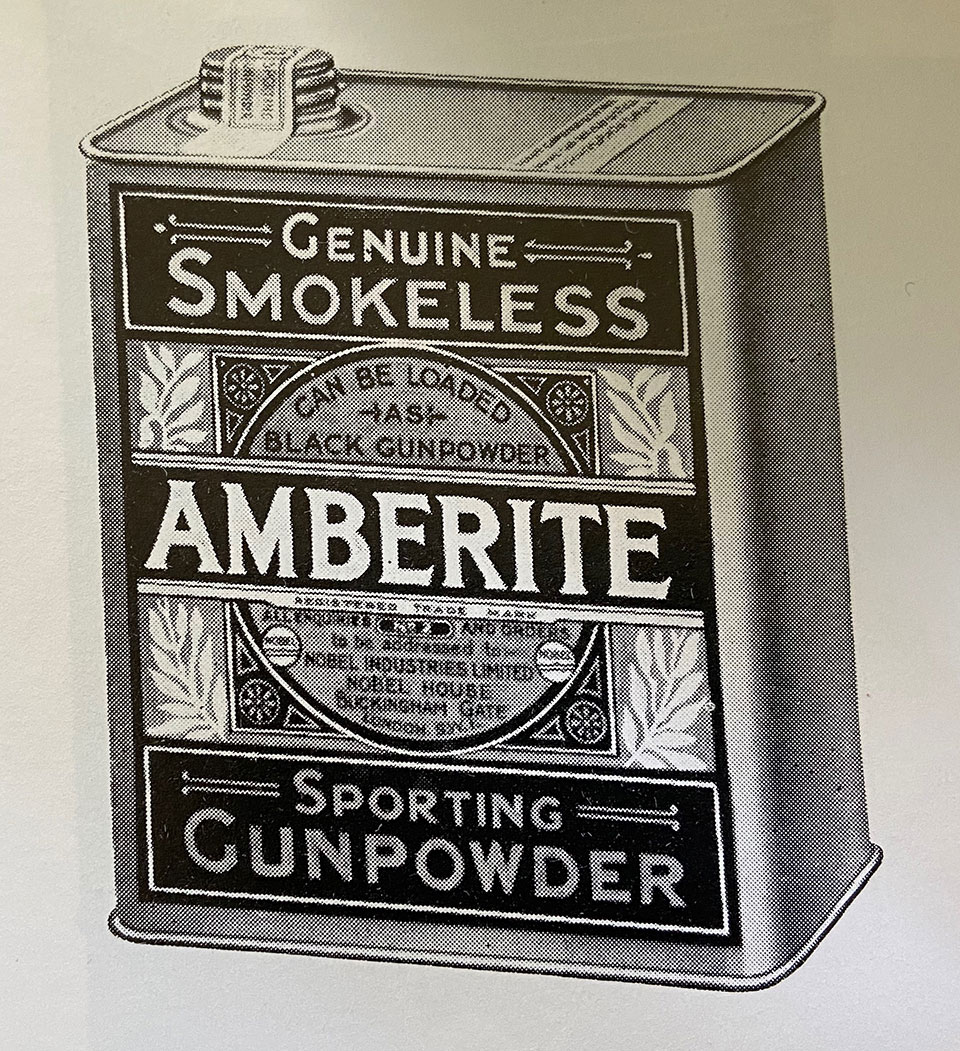
Published by Vintage Guns Ltd on (modified )



